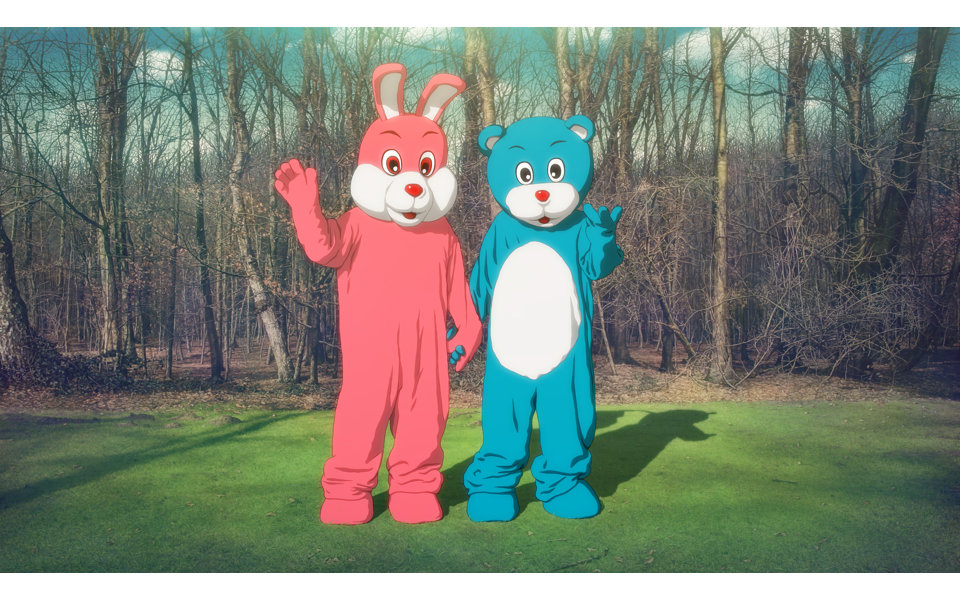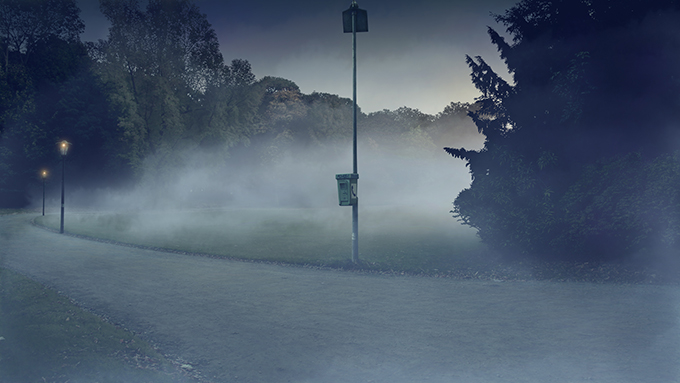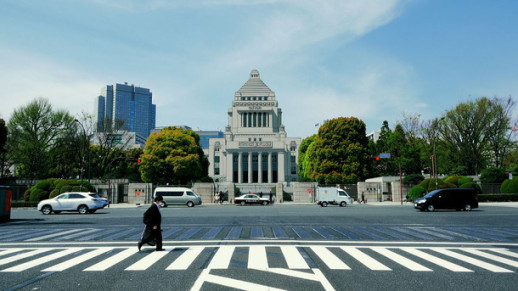Masaharu Sato – “Tokyo Trace”

It begins eerily. A video of two animated mascot-like characters in oversized costumes plays on a loop. On the left, a pink rabbit waves goodbye to you; on the right, a turquoise bear beckons you to enter their world. Aptly located in the entrance foyer, Bye Bye Come On (2010) is an unnerving farewell/welcome to encounter. Even if you manage to shake off its sinister tones, something else, something subtler, is amiss. While the characters are hand-drawn, they are superimposed on a backdrop of video footage. Either they’re in the wrong medium, or we are.
As the title suggests, most of the semi-animated works in Masaharu Sato’s “Tokyo Trace” copy images recorded on film. Sato’s practice, spotlighted in the tenth “Hara Documents” exhibition promoting emerging artists and curators, relies on a meticulous process of drawing with a digital pen over individual frames. Given its laborious nature, one might expect the results to exaggerate the source material dramatically, but instead, the artist opts to simulate it line for line.
The video installation Calling shows both German (2009-10) and Japanese (2014) versions of the identically titled work together. Each frame is a variation on a simple premise: someone is calling. In one scene, a public phone rings beneath a flurry of cherry blossom petals. In another, Air on the G String bleeps on an old mobile phone inside a crumbling bus overrun by plants. In yet another, a nocturnal scene shows a phone booth in a European city, the whole cubicle illuminates as the phone rings. Sound and vision combine to great effect.
Calling runs for about seven minutes before coming full circle. Pregnant with anticipation, what governs your participation, while being guided by an off-screen presence, is the assumption that the phone will be answered. The longer it plays, the longer the calls go unanswered. Perhaps it is the artist who is calling us? Whoever it is, it’s difficult not to be drawn into the narrative by familiar tones. Each setting reveals another unanswered phone, but progressively the sense of urgency subsides somehow. For an idea that has the potential to vex, however alienated these frames are, they are steeped in mystery that keeps you watching, listening, and waiting.

Audio also plays a central part in Tokyo Trace (2015-2016). Along the walls are animated vignettes of the city on flatscreen monitors. Seen at once, the room resembles a futuristic exhibition where simulations substitute paintings. While flattened cartoons float and loop on video, a self-playing piano produces Claude Debussy’s Clair de Lune at the far end. As the installation is completed with sound, illusions replace originals throughout the space.
An array of city scenes – crows, flowers, buildings, office workers and more – are replicated here. Visually, the animated sections smooth out features that meet the eye. Textures are simplified and imperfections are ironed out while concealing the original footage beneath. Occasionally, an irregular outline suggests a performative element of its production, but even then, Tokyo Trace is a composite of faithful or hyperreal reproductions.
The term ‘Hyperreality’ was coined by the French cultural theorist Jean Baudrillard (1929-2007). Broadly speaking, it refers to a situation in which signs become indistinguishable, or even more real, than what they represent. Disneyland is the epitome of hyperreality since it is an environment where fiction manifests itself as large as life. On the opening page of Baudrillard’s Simulacra and Simulations (1981) he cites a work of fiction[1] in which a cartographer is so intent on being exact that they produce a map as large as the world itself. Sato’s vision of Tokyo also occupies the same visual territory as its original counterpart, and like the cartographer, the artist charts a city.
Sampling his subjects on the original medium’s surface, Sato joins the video’s skin with what it masks, and makes its artifice clear. Although this risks undermining the image’s authority, such discernible differences in depiction only question the credibility of that which is represented in the first place. It is intriguing to see these layers pieced together, like a photomontage sitting on a painted plane. There is something wonderfully absurd about the notion of graphic signs spilling into the physical world and making a tangible impact.
Conversely, there is one occasion where Sato’s method makes a pointed statement. The image that stands out most is when he applies his technique to undermine the authority of a political feature of Tokyo’s landscape. In a short segment of film, a specific architectural icon is simulated; a symbol of government; the National Diet Building, as its animated equivalent. In only a few seconds of footage, the artist subverts an image of the establishment. Does its inclusion pay homage to power or does it offer political critique? Sato had the means at his disposal to alter it, but left the subject as it was. Tracing it was enough.

[1] Of Exactitude in Science, Jorge Luis Borges
Nick West
Nick West



